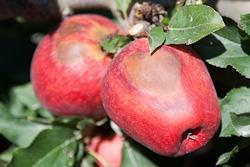
Australian agriculture is facing changes to where and how it grows crops as the country’s climate changes, according to a new book released by the Commonwealth Scientific and Industrial Research Organisation (CSIRO).
The book, Adapting Agriculture to Climate Change, involves contributions from over 30 authors examining the causes and consequences of climate change in Australia.
Grape production regions will be forced to change as the weather warms, according to the book, and heat and drought tolerant varieties will come to the fore.
The book also warned consumers may have to get used to colouration and flavour changes in products like oranges and tomatoes.
Leanne Webb and Penny Whetton, the CSIRO scientists who wrote the book’s chapter on horticulture, said warmer growing seasons would have a significant effect, like ‘re-greening’ citrus left on trees to sweeten, heat turning tomatoes yellow and lowering the sugar content of strawberries.
“Higher temperature can inhibit the formation of anthocyanin, the pigment causing colouration of apples and increase sunburn damage,” they told the Sydney Morning Herald.
Higher temperatures would also reduce the yields or quality of leafy vegetables such as spinach and lettuce, which may prematurely go to seed.
Areas with the number of chilling hours required for apples, pears and certain stonefruit varieties are also expected to shrink.
“It is increasingly apparent that changes to climate will have a greater impact on Australian primary producers than on most others: we already live in one of the harshest and most variable climates in the world and this is only likely to become more so under most current projections,” said Dr Michael B Robinson in the book’s preface.
“Our innovative and adaptive producers must continue to push the envelope on the basis of good science combined with their intimate knowledge to feed and clothe the world in the decades ahead.”






No comments yet